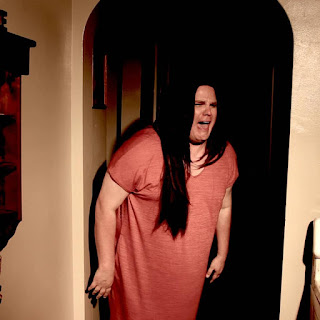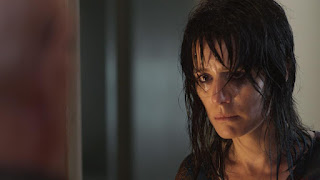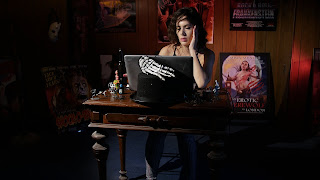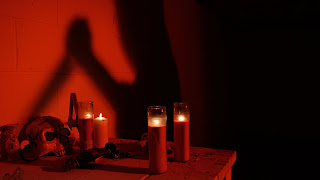Text © Robert
Barry Francos / Indie Horror Films, 2022
Images from the Internet
Truly, Madly
Directed by Brian
Dorton (aka Katrina Lizhope)
reel EPIC entertainment
75 minutes, 2020 / 2022
https://www.facebook.com/Reel.EPIC.entertainment/
Louisville, Kentucky, where this film was shot, is solid “Red” state territory, deep in the Bible belt, with Trump signs on every corner during the last election and a cross nailed on multiple walls of every house. It is a center of the New Republic of Christ, where the religious are self-righteous, unvaccinated, and full of love for themselves and everyone else, if’n yer not a heathen, or gay. Or vaccinated.
In this environment, lives Anthony (Adam Freeman), who is both non-religious and openly gay. He shares his home with his uber-righteous mother, buxom Barbara (the appropriately named Sondra Carver), who has recently lost her husband and is a bit bitter. She’s also willing to go to any extreme to keep her son (and others) away from the “lifestyle.” Even if it involves knives. Y’see, Barbara is a bit like Kathleen Turner’s character in Serial Mom (1994) in that she has a tendency to take what she considers sin into her own hands, but without Turner’s ‘50s sit-com-like charm. (“God and I have an understanding,” posits Barbara in a moment of delusion).
Be it her son’s lovers or the pedophilic guy in the church, Bob (Douglas Connor), who has been found out, Barbara is not going to stand for this outrage to her Lord. And in full hypocrite mode, she is often at full ire and willing to judge others, including her neighbors. No cheeks turned with this woman, it’s blades and burial.
There are other interesting characters filling the story, such as Fran (Dixie Gers, the titular Crazy Fat Ethel in 2016, by the same director), who is a member of Barbara’s church and is actually closer to what Barbara is deluded to believe she is, which makes her angry, and Anthony’s trans friend Geena (director Brian Dorton), whose life is possibly in peril due to his association with Anthony (though just friends) thanks to mommy. And there is a nice kill ratio here.
There are a few minimalist levels to the film. First, and I am making an assumption here, is the budget. This looks like a threadbare story despite the nice sized cast, and the production looks like it cost about as much as the catering. I actually respect that, seeing how much can be done with the bare minutest. The other minimalism is the film’s presentation. There is no fancy editing, and even the acting reminds me of the early films of John Waters and David Cronenberg, if you get what I mean. And, again, I’m fine with it. The most common SFX in the film is added scratches and the program to make the film look like it was printed off a time- damaged negative.
Considering the overlapping genres in this film, it should come as no surprise that there is nudity, but nearly all male (except for a woman in a bathtub in a definitely non-sexual moment). As an ally, I have no problem with man-on-man sex scenes, though I’m not turned on by it (same with women-on-women, but I digress…). That being said, the male lead (Freeman) and his partner in the scene are handsome men, I know a lot of my friends who would happily raise an – er – eyebrow at seeing the bods, especially if you are into bears.
This is a very dark comedy geared toward the LGBTQ community, but not exclusively. There were lots of little things that made me laugh, such as Barbara calling someone named Sloan (Athena Prychodko) as “Sah-lone.”
The third act feels like it is going to be a bit anti-climactic, but instead, there is a really nice twist at the end that I didn’t see coming. Well done! It’s a bit convoluted and left me with a big question, but still so worth it.
When you decide to see this film, and you should, I recommend making it a double feature with Death Drop Gorgeous (2020; reviewed HERE)
The extras on the Blu-ray include Deleted/Extra Scenes, Writer/Director interview, a Blooper reel, a Photo Gallery, and Trailer, which can be purchased HERE.
IMBD Listing HERE





























